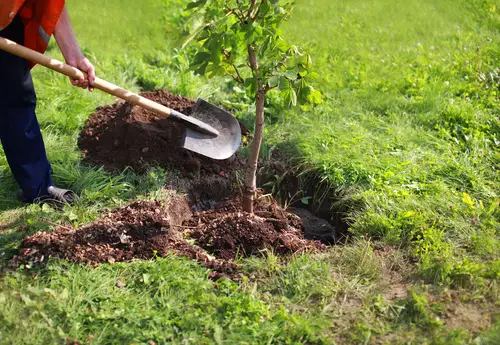Planting trees in Texas can be a rewarding and beneficial experience for both the environment and property owners. Trees provide shade, improve air quality, and increase property values. However, it is important to understand the Texas climate and choose the right time of year to plant a tree to ensure its success.
Texas has a diverse climate with hot summers and mild winters, making it important to choose the right time of year to plant a tree. The best time to plant a tree in Texas is during the fall and winter months when temperatures are cooler and there is more rainfall.
Planting during these months allows the tree to establish its roots before the hot summer months arrive. When choosing a tree to plant in Texas, it is important to consider the climate, soil, and water requirements of the tree.
Native trees such as the Texas Red Oak, Cedar Elm, and Pecan are well-suited to the Texas climate and require less maintenance than non-native trees. Additionally, it is important to choose a tree that is appropriate for the size of the planting area and will not interfere with power lines or other structures.
Key Takeaways
- Fall and winter are the best times to plant a tree in Texas.
- Native trees such as the Texas Red Oak, Cedar Elm, and Pecan are well-suited to the Texas climate.
- Choosing the right tree for the size of the planting area and considering maintenance requirements is important for tree success.
More on this category:
- When to Plant Grass Seed in Maine?
- When to Plant Grass Seed in Massachusetts?
- When Do You Plant Strawberries in North Carolina?
Understanding the Texas Climate
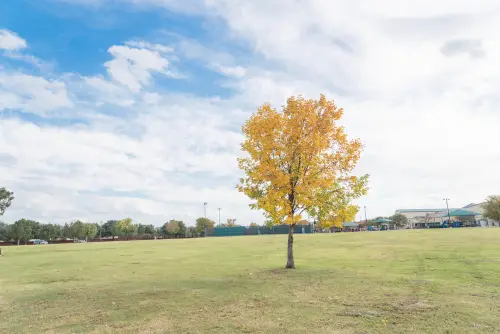
Texas has a diverse climate due to its large size and location. The state experiences three main climate types: continental steppe, mountain, and subtropical modified marine. These climates have varying temperatures, rainfall, and humidity levels that affect tree growth and survival.
In the continental steppe climate, temperatures can reach extremely high levels with low rainfall and humidity. This climate is prevalent in West Texas and the Panhandle. Trees that can tolerate drought and heat, such as mesquite, honey locust, and cottonwood, are suitable for planting in this area.
The mountain climate, found in the western part of Texas, has lower temperatures and irregular precipitation. Trees that can withstand cold temperatures and drought, such as juniper, oak, and pine, are good choices for planting in this area.
The subtropical modified marine climate is the most common climate in Texas. It is classified as arid, semi-arid, humid, and sub-humid. This climate has hot summers and mild winters with moderate rainfall. Trees that can tolerate heat and drought, such as live oak, crepe myrtle, and magnolia, are suitable for planting in this area.
It is important to consider the climate when selecting trees for planting in Texas. Trees that are not adapted to the climate may not survive or grow well, leading to wasted resources and effort. The Texas Tree Selector tool provided by the Texas A&M Forest Service can help individuals select the best trees for their specific area and climate.
Types of Trees Suitable for Texas
When it comes to planting trees in Texas, it’s important to choose species that are well-suited to the state’s unique climate and soil conditions. Texas is home to a wide variety of trees, from towering live oaks to fragrant magnolias. Below are two categories of trees that are particularly well-suited to Texas.
Native Trees
Native trees are a great choice for Texas because they are adapted to the state’s climate and soil conditions. Some common native trees in Texas include live oak, cedar elm, bald cypress, and bur oak.
Live oak, for example, is a large, long-lived tree that is well-suited to the hot, dry conditions of Texas. Cedar elm is another popular native tree that is known for its drought tolerance and ability to grow in a variety of soil types.
Drought Tolerant Trees
Texas is known for its hot, dry summers, so it’s important to choose trees that can withstand periods of drought. Some trees that are particularly well-suited to Texas’ climate include bald cypress, bur oak, and magnolia.
Bald cypress, for example, is a deciduous conifer that is known for its ability to grow in wet or dry conditions. Bur oak is another drought-tolerant tree that can grow up to 80 feet tall and is known for its beautiful, deeply-lobed leaves. Magnolia is a popular ornamental tree that is well-suited to Texas’ hot, humid summers.
When choosing a tree to plant in Texas, it’s important to consider factors such as the tree’s size, growth rate, and environmental requirements. By selecting a tree that is well-suited to Texas’ unique climate and soil conditions, you can ensure that it will thrive and provide beauty and shade for years to come.
When to Plant Trees in Texas
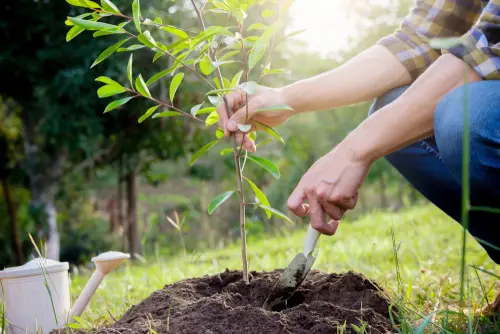
Planting trees in Texas can be a rewarding experience, but it’s important to know when to plant to ensure the best chance of success.
The best time to plant trees in Texas is during the dormant season, which typically runs from October to March. This is when the soil is cooler and moister, providing an ideal environment for root growth.
It’s important to note that the best time to plant trees in Texas can vary depending on the region. For example, in the Panhandle region, the best time to plant is in the fall, while in the Gulf Coast region, the best time is in the winter.
In addition to the time of year, it’s important to consider the specific tree species and its planting requirements. Some trees, such as live oaks and red oaks, are best planted in the fall, while others, such as bald cypress and pecan, are best planted in the winter.
It’s also important to avoid planting trees during extreme weather conditions, such as drought or excessive rainfall. Trees planted during these conditions are more likely to struggle with establishing roots and may not survive.
How to Plant a Tree in Texas
Planting a tree in Texas requires careful consideration of several factors, including the right spot, preparing the tree, planting the tree, and aftercare. Here is what you need to know to plant a tree successfully in Texas.
1. Choosing the Right Spot
Choosing the right spot is crucial to the tree’s growth and survival. Here are some things to consider when selecting a spot:
- Soil: Trees thrive in well-draining soil that is rich in organic matter. Avoid planting in areas with compacted or poorly drained soil.
- Sunlight: Trees need sunlight to grow. Choose a spot that receives at least six hours of direct sunlight per day.
- Space: Consider the mature size of the tree and make sure it has enough space to grow. Avoid planting too close to buildings, power lines, or other trees.
- Water: Make sure the spot you choose is within reach of a water source. Trees need regular watering, especially during the first few years after planting.
2. Preparing the Tree
Before planting the tree, it is essential to prepare it properly. Here are some things to consider when preparing the tree:
- Root ball: The root ball should be moist but not soaking wet. Gently remove any circling roots and cut any that are too long.
- Root flare: The root flare is the area where the trunk begins to flare out at the base of the tree. Make sure it is visible and not buried in the soil.
- Pruning: Prune any damaged or dead branches, but avoid pruning too much. The tree needs its leaves to produce food through photosynthesis.
3. Planting the Tree
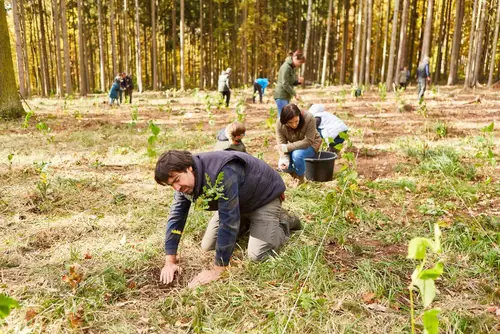
Planting the tree correctly is crucial to its growth and survival. Here are some things to consider when planting the tree:
- Digging the hole: Dig the hole at least twice as wide as the root ball and only as deep as the root ball’s height.
- Backfilling: Use the soil you dug out to backfill around the root ball. Do not add any soil amendments.
- Watering: Water the tree thoroughly after planting and regularly during the first few years. Avoid overwatering, which can drown the roots.
- Mulching: Mulch around the tree to retain moisture and suppress weeds. Avoid piling the mulch against the trunk, which can cause rot.
4. Aftercare
After planting the tree, it is essential to care for it properly. Here are some things to consider when caring for the tree:
- Watering: Water the tree regularly, especially during hot and dry periods.
- Fertilizing: Fertilize the tree once a year with a slow-release fertilizer.
- Pruning: Prune the tree as needed to remove damaged or dead branches and promote healthy growth.
- Pests and diseases: Keep an eye out for pests and diseases and take action promptly if you notice any signs of trouble.
By following these guidelines, you can plant a tree in Texas that will grow and thrive for years to come.
Soil and Water Requirements
When planting a tree in Texas, it is important to consider the soil and water requirements of the tree. Native soil is the best option for planting a tree since it is already adapted to the local climate and will provide the necessary nutrients for the tree’s growth.
Texas has a diverse range of soils, including black heavy clay soils, soft limestone and chalk, and sandy soils. Each soil type has its own characteristics and requires different watering techniques.
Clay soils are known for their ability to retain water, but they take longer to absorb it. On the other hand, sandy soils absorb water quickly but do not hold it for long. Loam soil is a mix of clay and sand and is considered the best soil type for planting trees.
When planting a tree in clay soil, it is important to water it slowly to ensure that the water is absorbed properly. In sandy soil, trees need to be watered more often since the soil doesn’t hold water for long.
When planting a tree, it is important to ensure that the soil is well-drained to prevent waterlogging, which can lead to root rot. To achieve this, the tree should be planted slightly above the surface of the ground to allow for settling and proper drainage.
Backfill the hole with native soil only and avoid using soil enhancements or fertilizers when initially planting your tree. Firmly pat down the soil and thoroughly water it to allow the tree to settle and fill in any air pockets.
In Texas, it is important to water trees regularly, especially during the summer months when temperatures can soar. The amount of water required depends on the soil type and the tree species.
As a general rule, trees need one inch of water per week, but this can vary depending on the weather conditions. It is important to water the tree deeply to encourage deep root growth and to avoid watering the foliage, which can lead to fungal diseases.
Benefits of Planting Trees in Texas
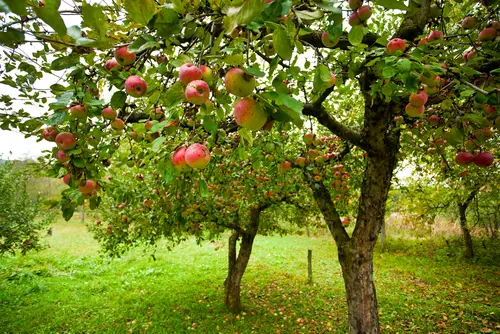
Planting trees in Texas offers a wide range of benefits to both the environment and the people living in the area. Here are some of the benefits of planting trees in Texas:
1. Shade
One of the most obvious benefits of planting trees in Texas is the shade they provide. Trees can help reduce the amount of direct sunlight that enters a home, which can help keep the interior cooler and reduce the need for air conditioning. This can help lower energy bills and reduce the strain on the power grid during hot summer months.
2. Canopy
Trees also provide a canopy that can help reduce the amount of rain that falls directly on the ground. This can help reduce the risk of flooding and erosion, which can be a major problem in areas with heavy rainfall. Trees can also help filter pollutants out of the air, which can help improve air quality.
3. Leaf
The leaves of trees provide a number of benefits as well. They can help reduce the amount of dust and other pollutants in the air, which can help improve air quality. They can also help reduce noise pollution, which can be a major problem in urban areas.
Additionally, trees can help provide habitat for a wide range of wildlife, including birds and insects.
Considerations for Tree Maintenance
1. Mulching
Mulching is an important part of tree maintenance that can help improve soil moisture retention, prevent weed growth, and regulate soil temperature.
When mulching a tree in Texas, it is important to use a layer of organic material that is at least 2-3 inches deep and covers a wide area around the tree’s base. This can include materials such as wood chips, bark, or compost.
It is important to avoid piling mulch up against the tree’s trunk, as this can cause moisture buildup and lead to disease or pest problems. Instead, create a “mulch donut” around the tree’s base, leaving a few inches of space between the mulch and the trunk.
2. Sunlight Requirements
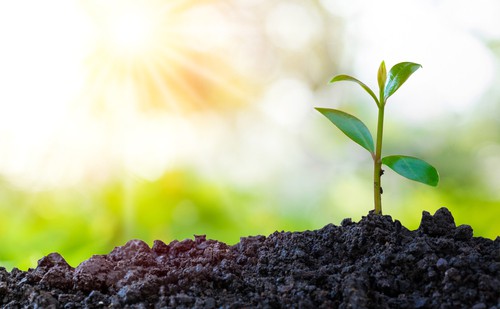
When selecting a location to plant a tree in Texas, it is important to consider the tree’s sunlight requirements. Some trees require full sun, while others prefer partial shade. It is important to choose a location that provides the appropriate amount of sunlight for the specific tree species.
If a tree is not receiving enough sunlight, it may have stunted growth, reduced foliage, or be more susceptible to disease and pest problems. On the other hand, if a tree is receiving too much sunlight, it may experience leaf scorch or other sun damage.
3. Wood
When it comes to tree maintenance, it is important to keep an eye out for any signs of wood decay or damage. This can include cracks, splits, or hollow areas in the tree’s trunk or branches.
If a tree is showing signs of wood decay, it is important to have it inspected by a certified arborist. In some cases, the tree may need to be removed to prevent it from falling and causing damage to property or people.
Regular pruning can also help prevent wood decay by removing any dead or diseased branches before they can spread to other areas of the tree. It is important to use proper pruning techniques and equipment to avoid causing further damage to the tree.
Frequently Asked Questions
What are the best trees to plant in Texas?
When selecting trees to plant in Texas, it is important to choose species that are adapted to the state’s climate and soil conditions.
Some of the best trees to plant in Texas include live oak, cedar elm, bald cypress, pecan, and mesquite. These species are known for their resilience to drought, heat, and other environmental stressors common in Texas.
What is the best time of year to plant trees in Houston?
The best time to plant trees in Houston is during the fall and winter months, between November and February. During this time, the weather is cooler and there is typically more rainfall, which helps new trees establish their root systems before the hot and dry summer months.
Where can I find Austin tree planting volunteer opportunities?
If you’re looking for volunteer opportunities to plant trees in Austin, you can check with local organizations such as TreeFolks, Keep Austin Beautiful, and the Austin Parks Foundation.
These organizations often host tree planting events throughout the year and are always in need of volunteers to help with planting and maintenance.
When is the ideal time to plant trees in West Texas?
The ideal time to plant trees in West Texas is during the fall and winter months, between October and February. During this time, the temperatures are cooler and there is typically more rainfall, which helps new trees establish their root systems before the hot and dry summer months.
When is the best time to plant bushes in Texas?
The best time to plant bushes in Texas is during the fall and winter months, between October and February. During this time, the temperatures are cooler and there is typically more rainfall, which helps new bushes establish their root systems before the hot and dry summer months.
When is the optimal time to plant shrubs in Central Texas?
The optimal time to plant shrubs in Central Texas is during the fall and winter months, between October and February.
During this time, the temperatures are cooler and there is typically more rainfall, which helps new shrubs establish their root systems before the hot and dry summer months.

Hey, I’m Lisa and I’ve been an avid gardener for over 30 years. I love writing, talking and living in the garden! Feel free to connect with me on my socials below

